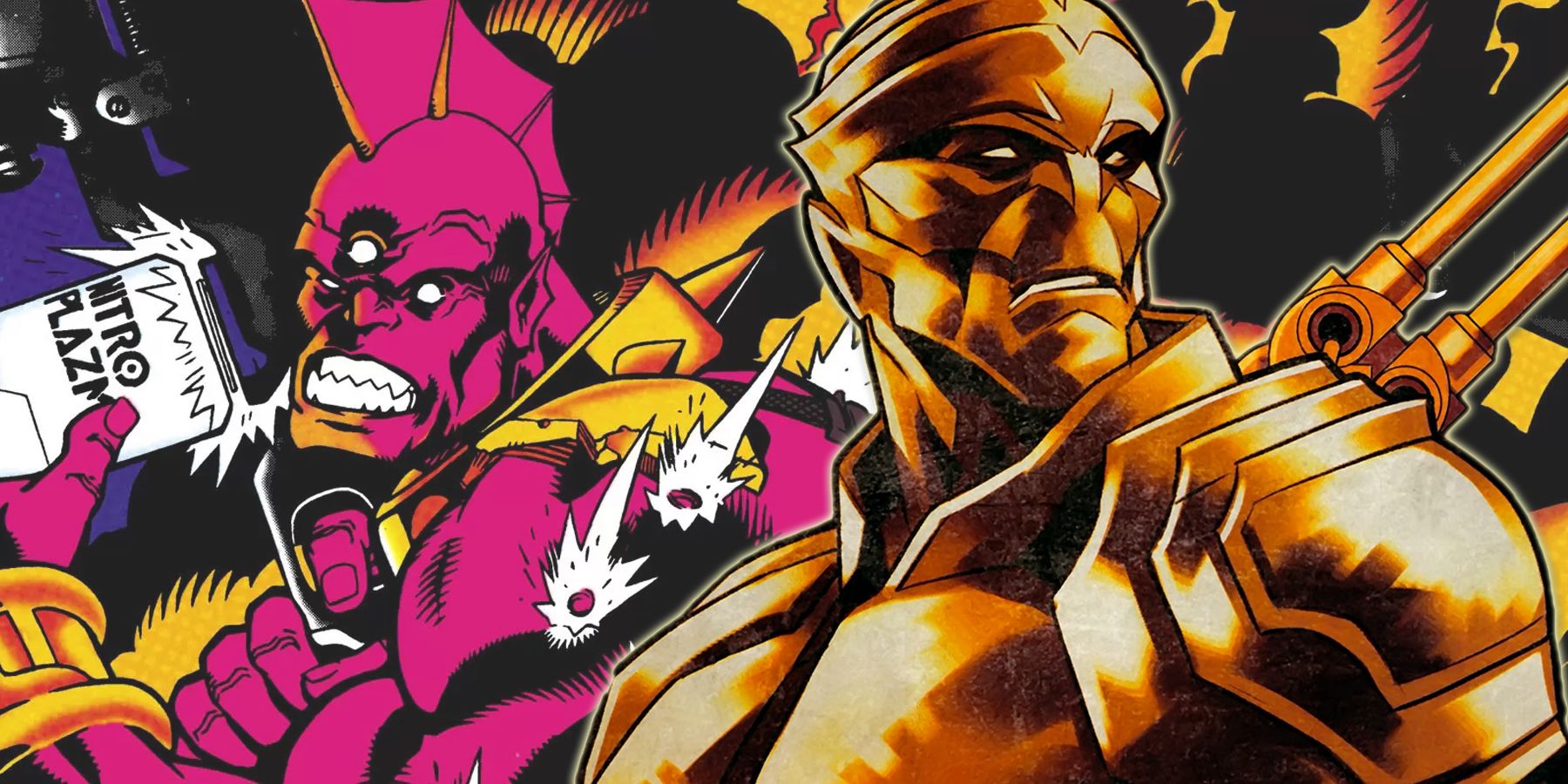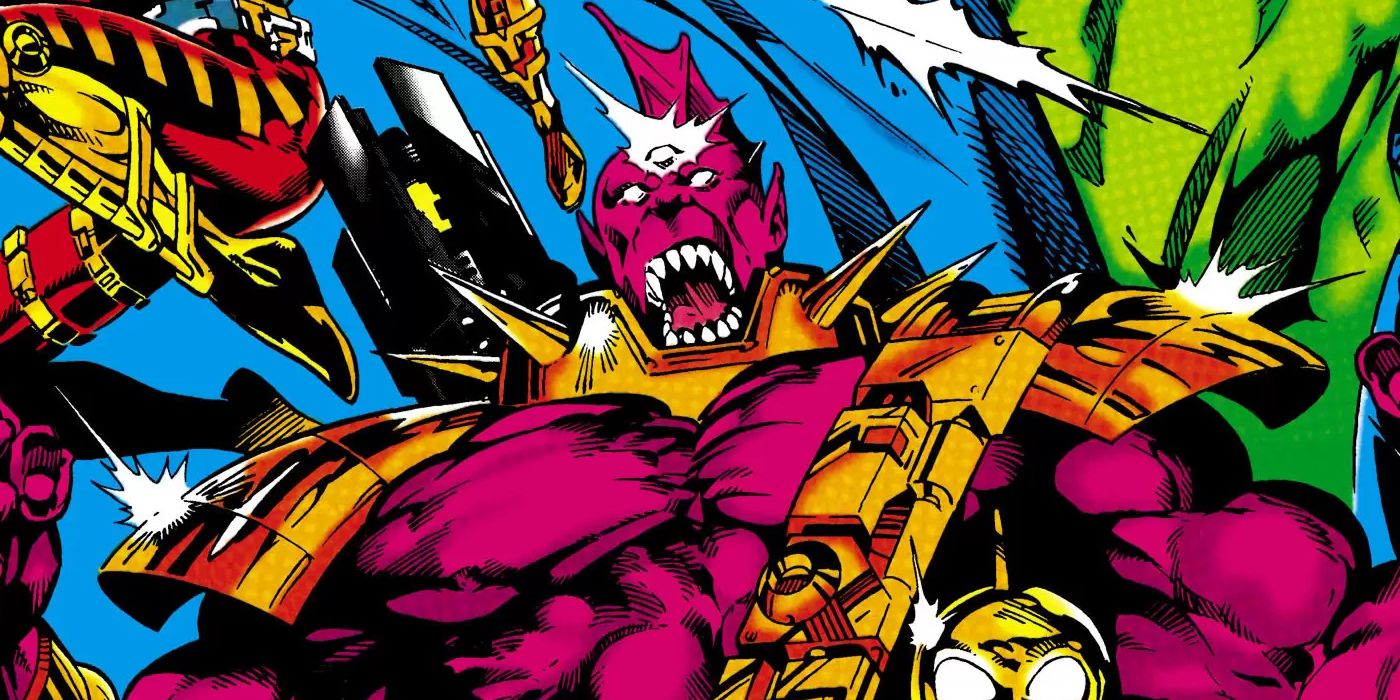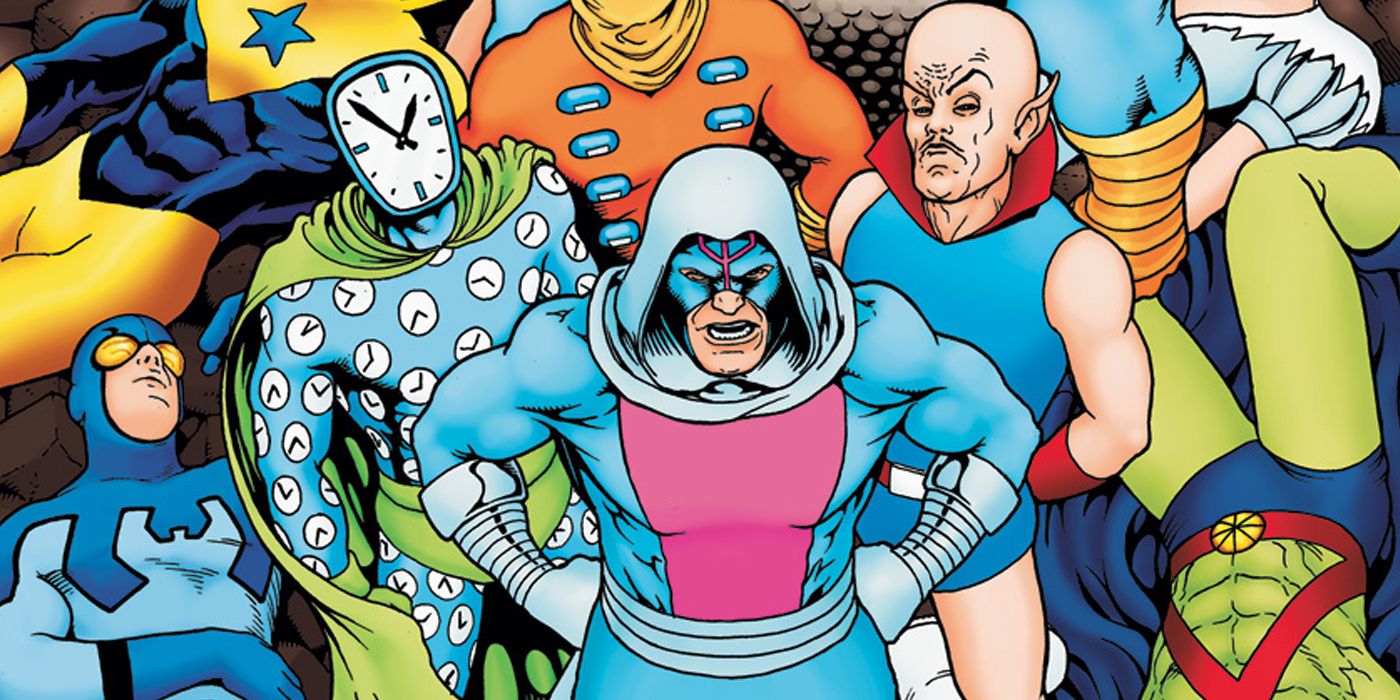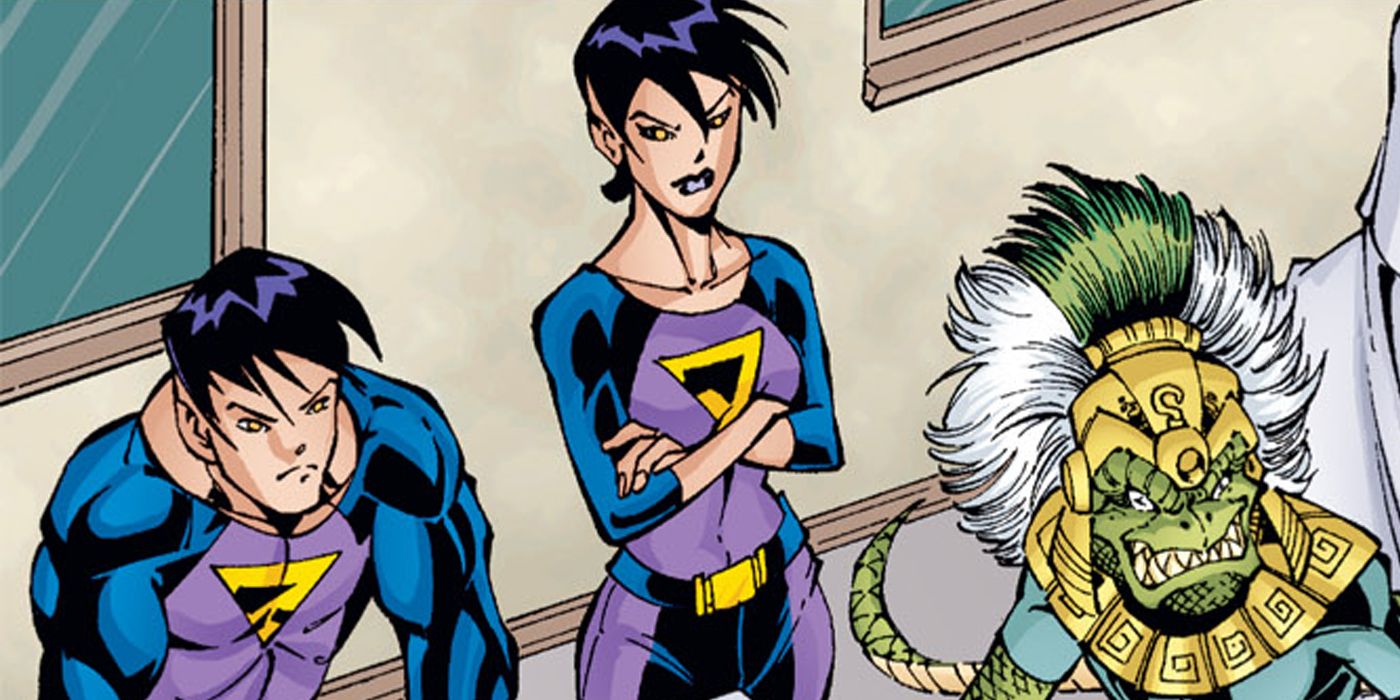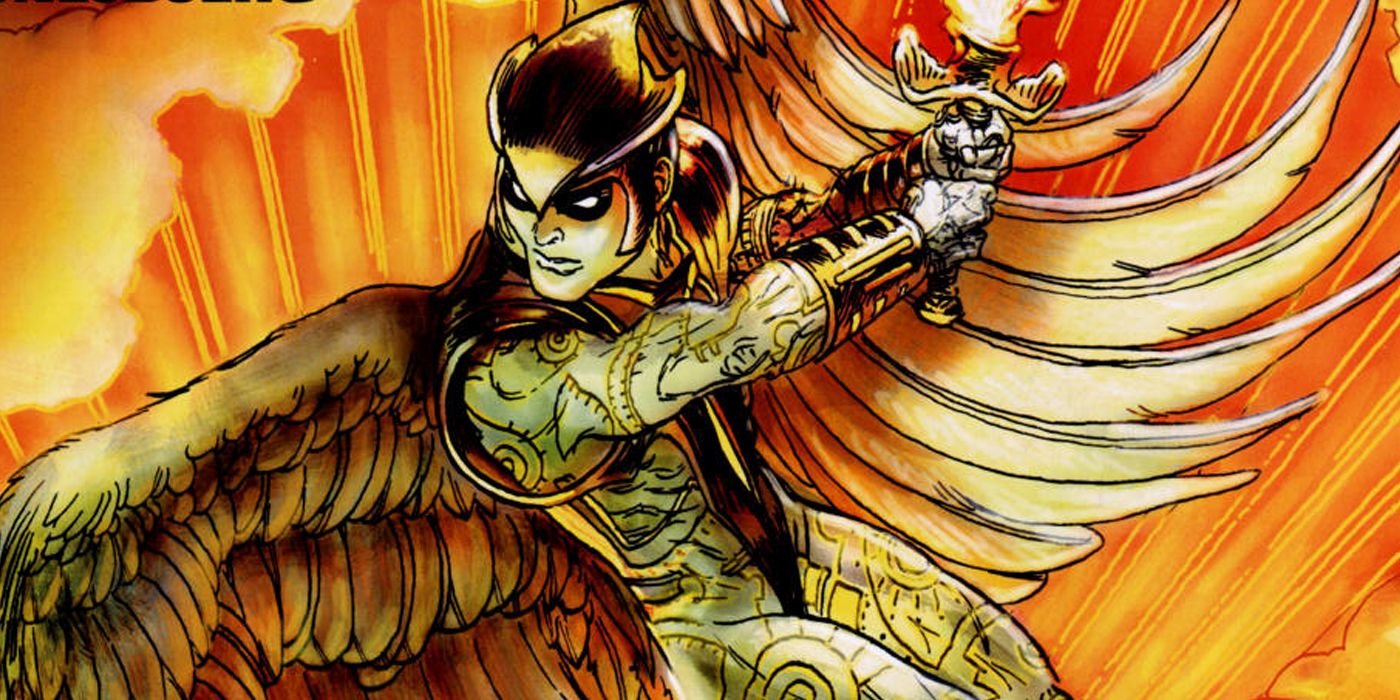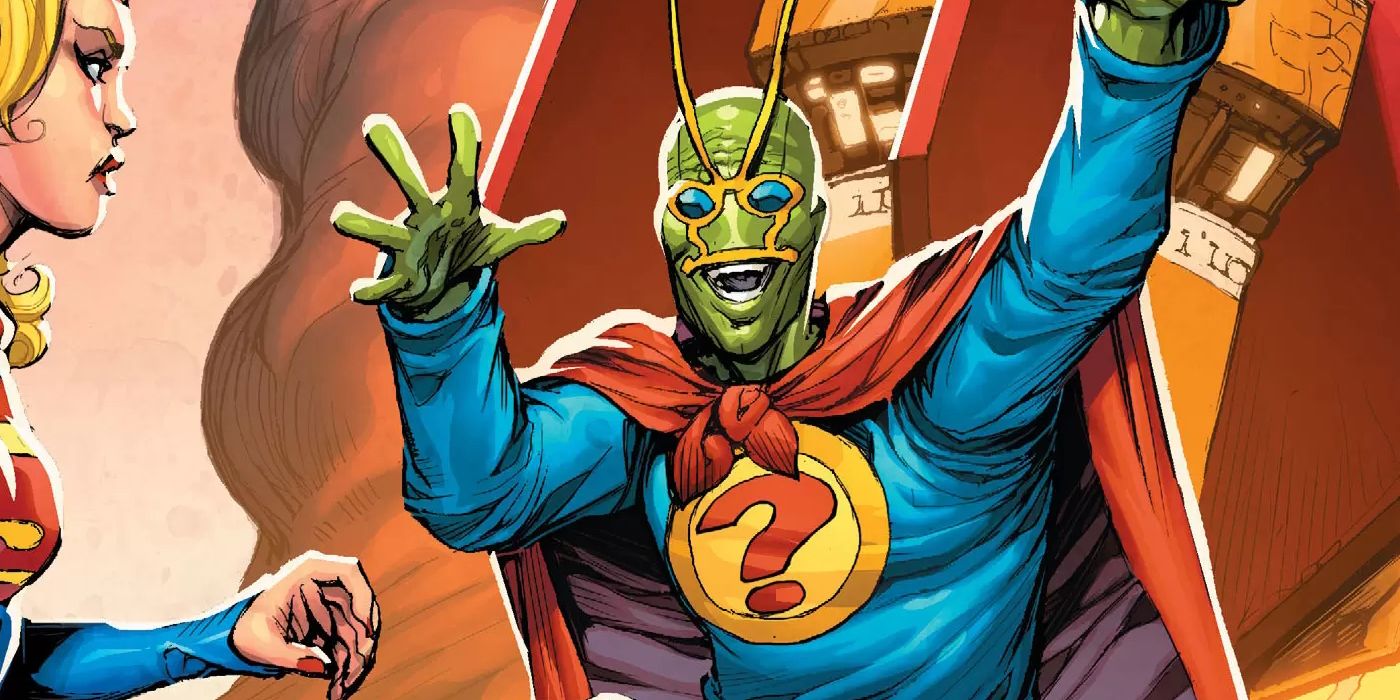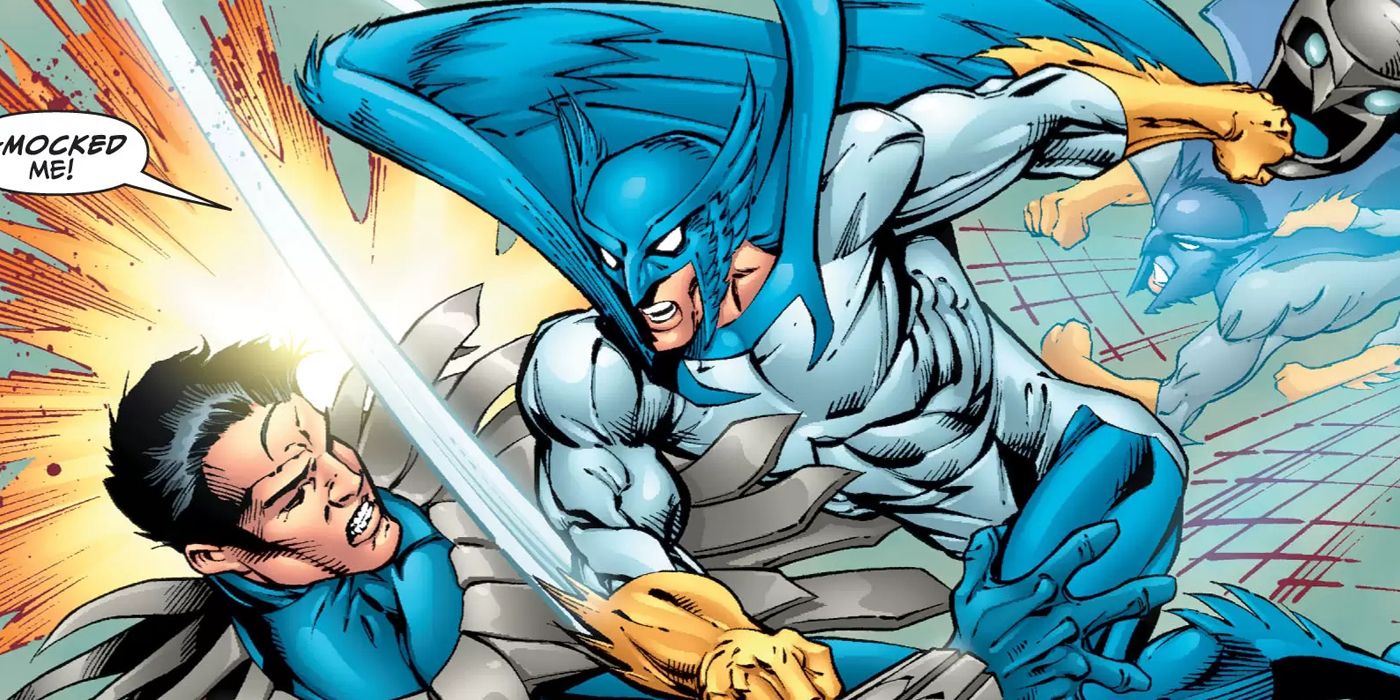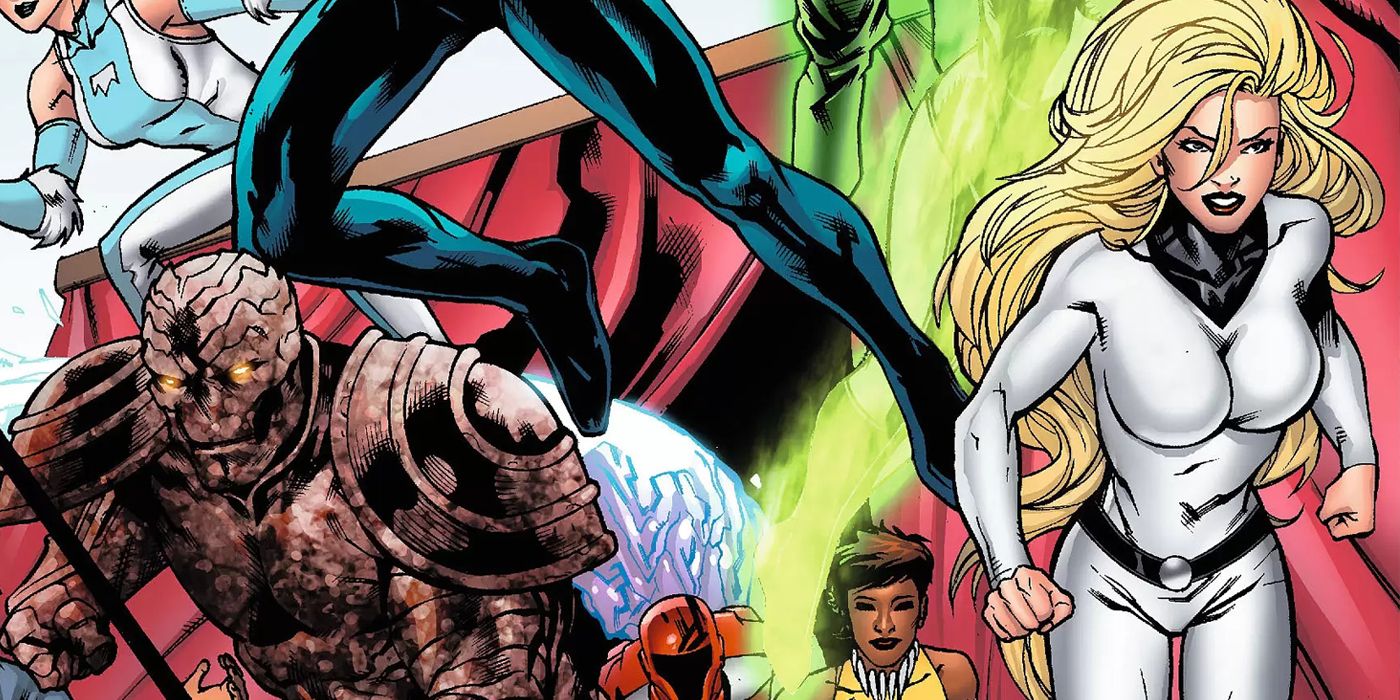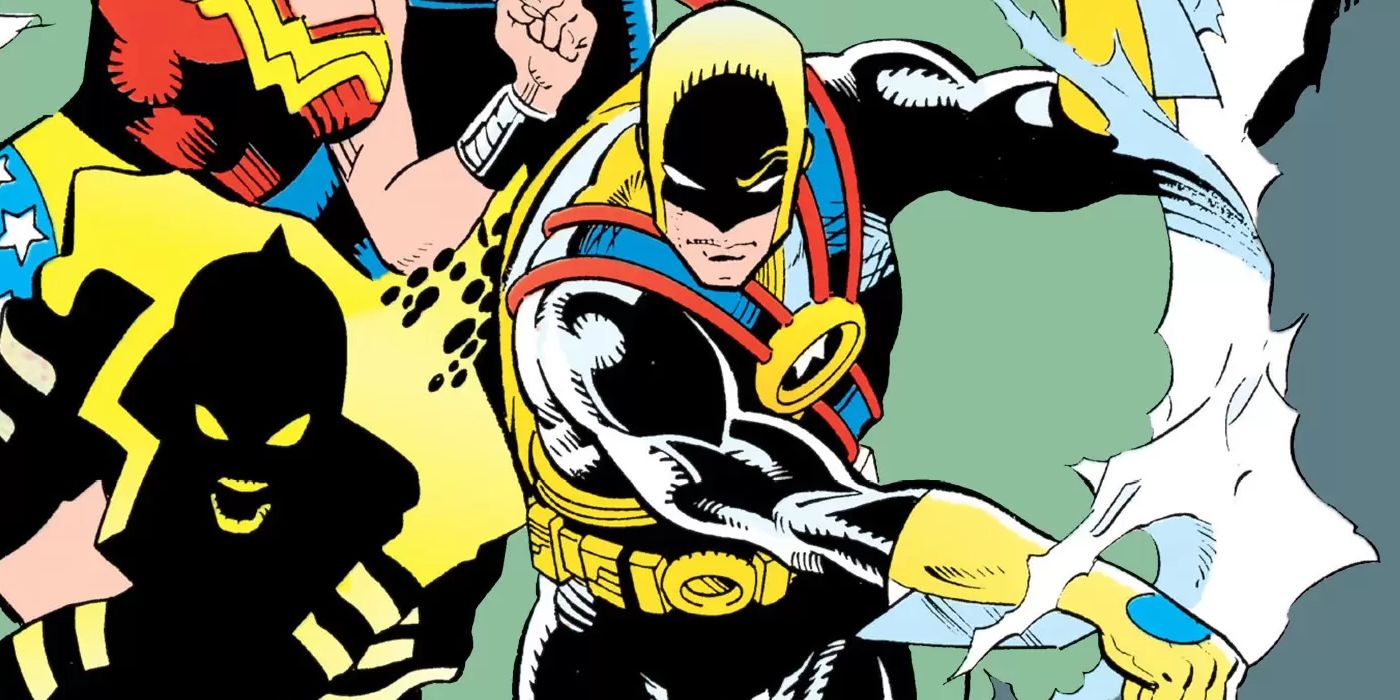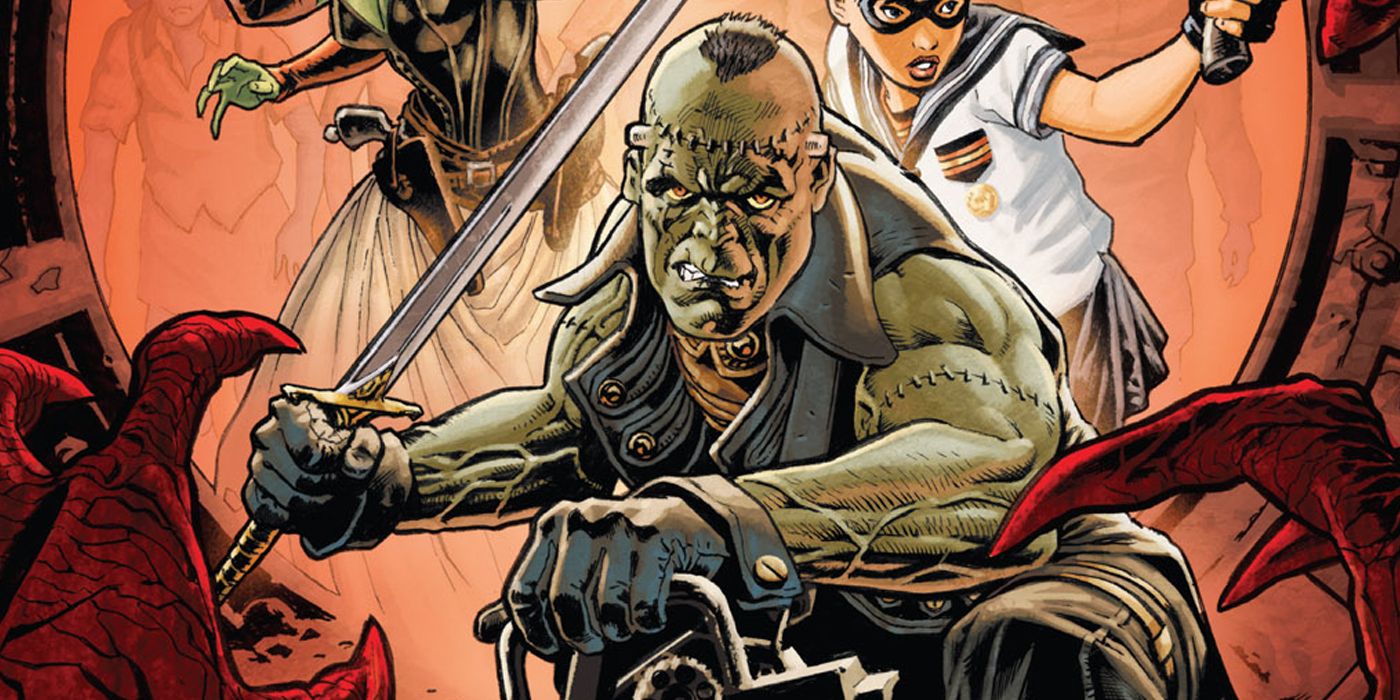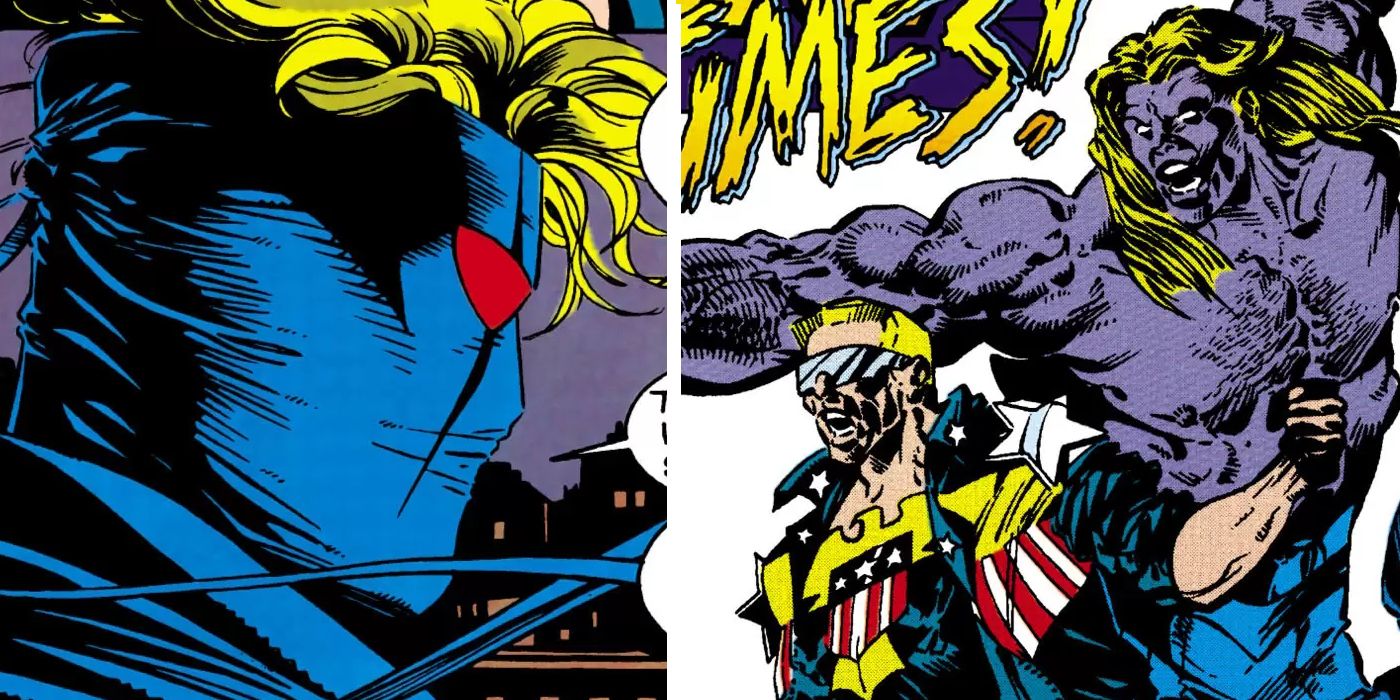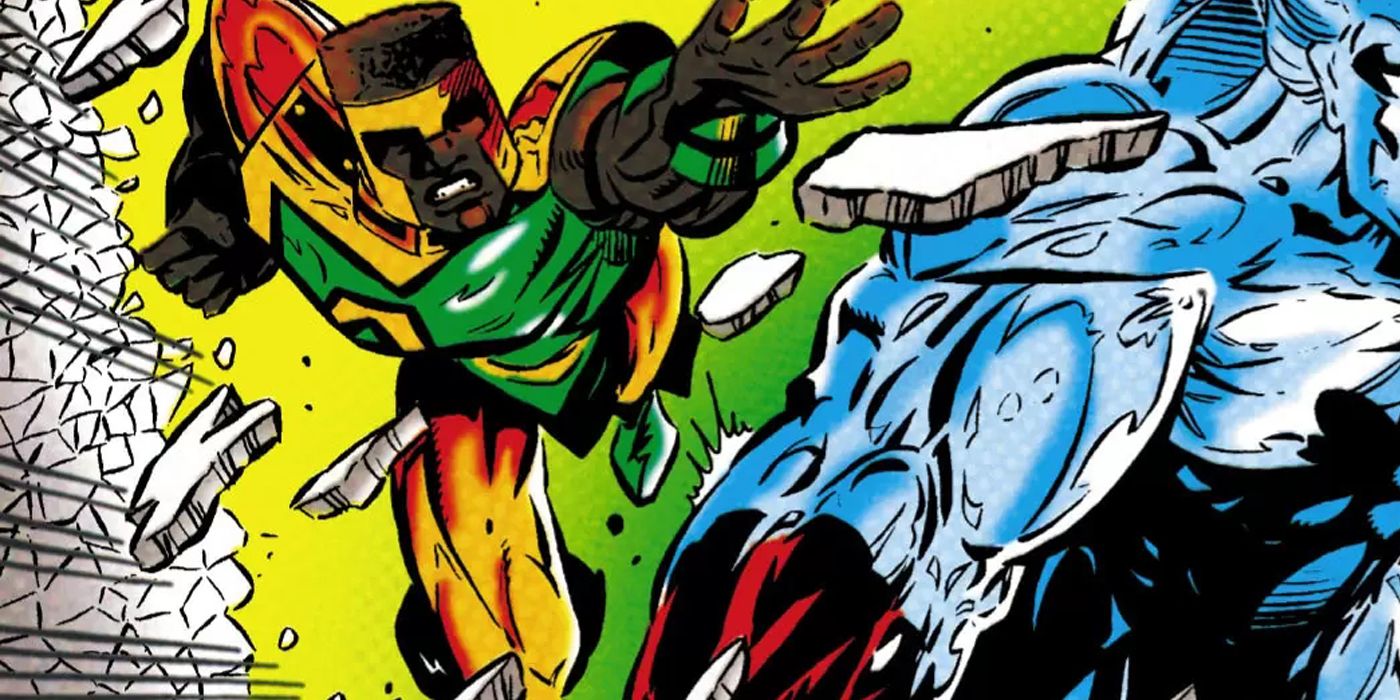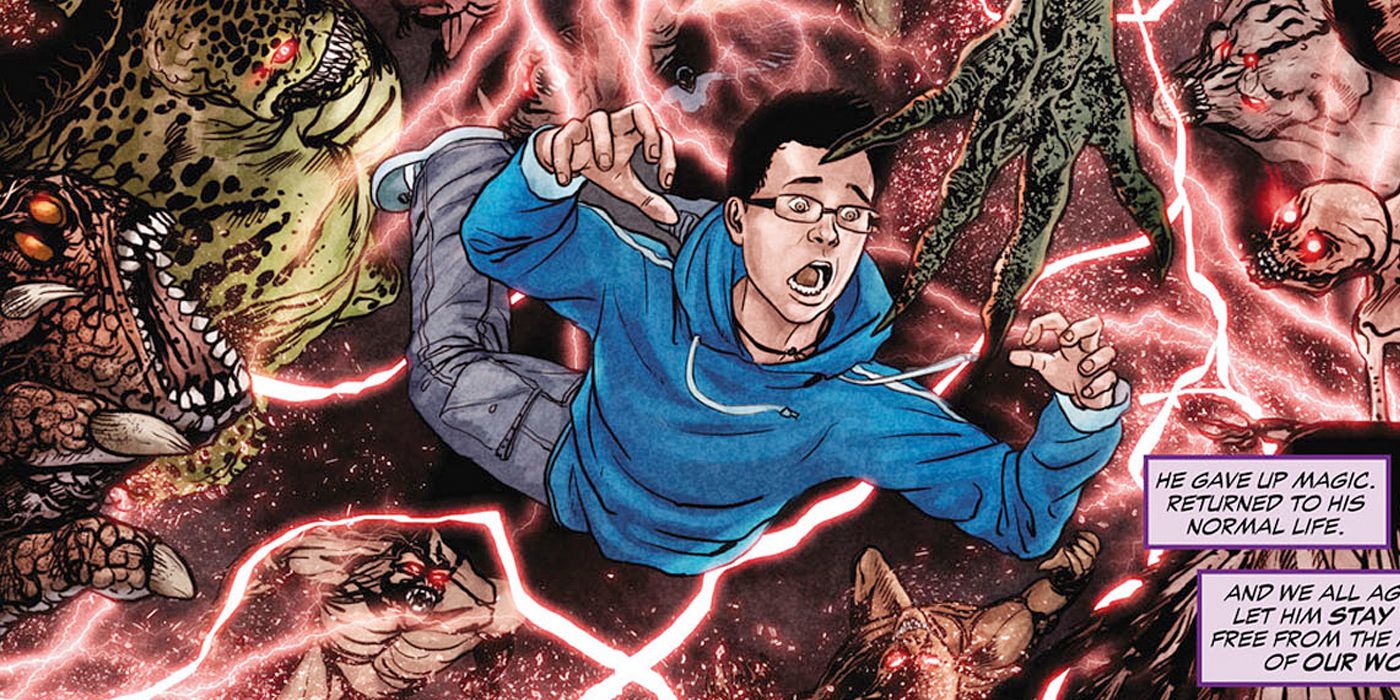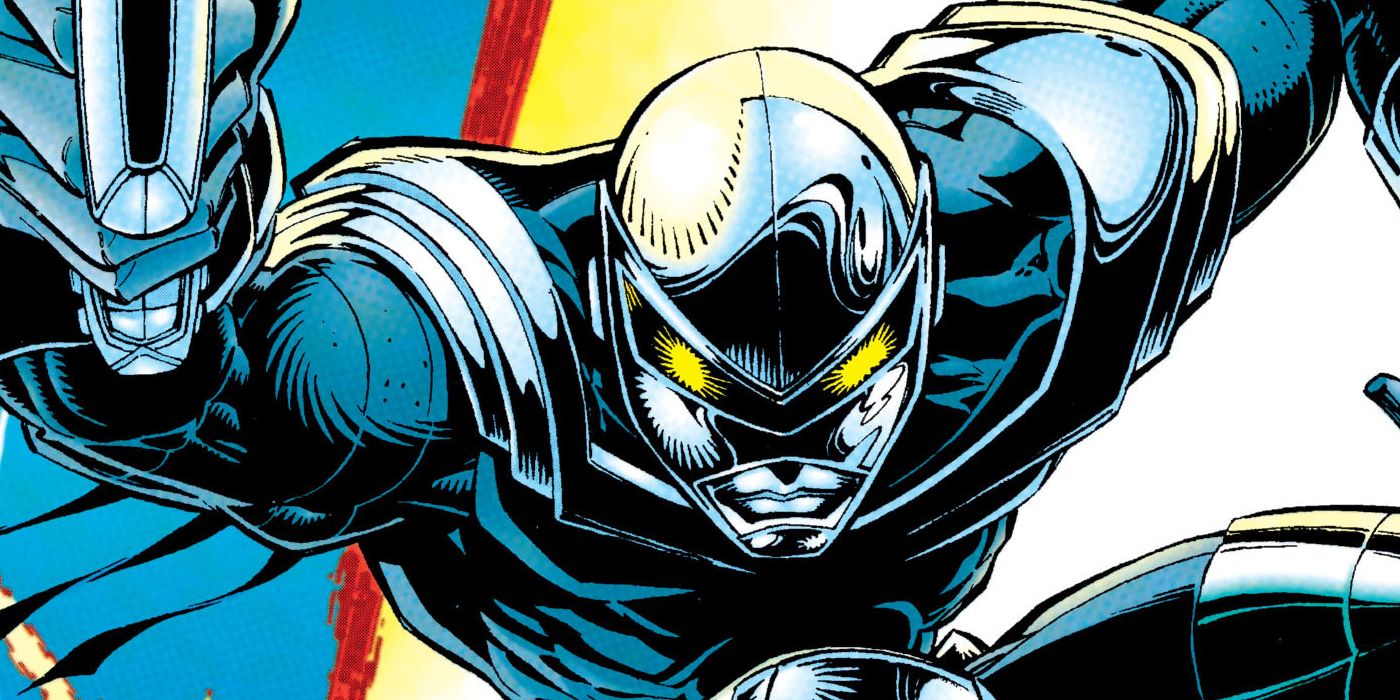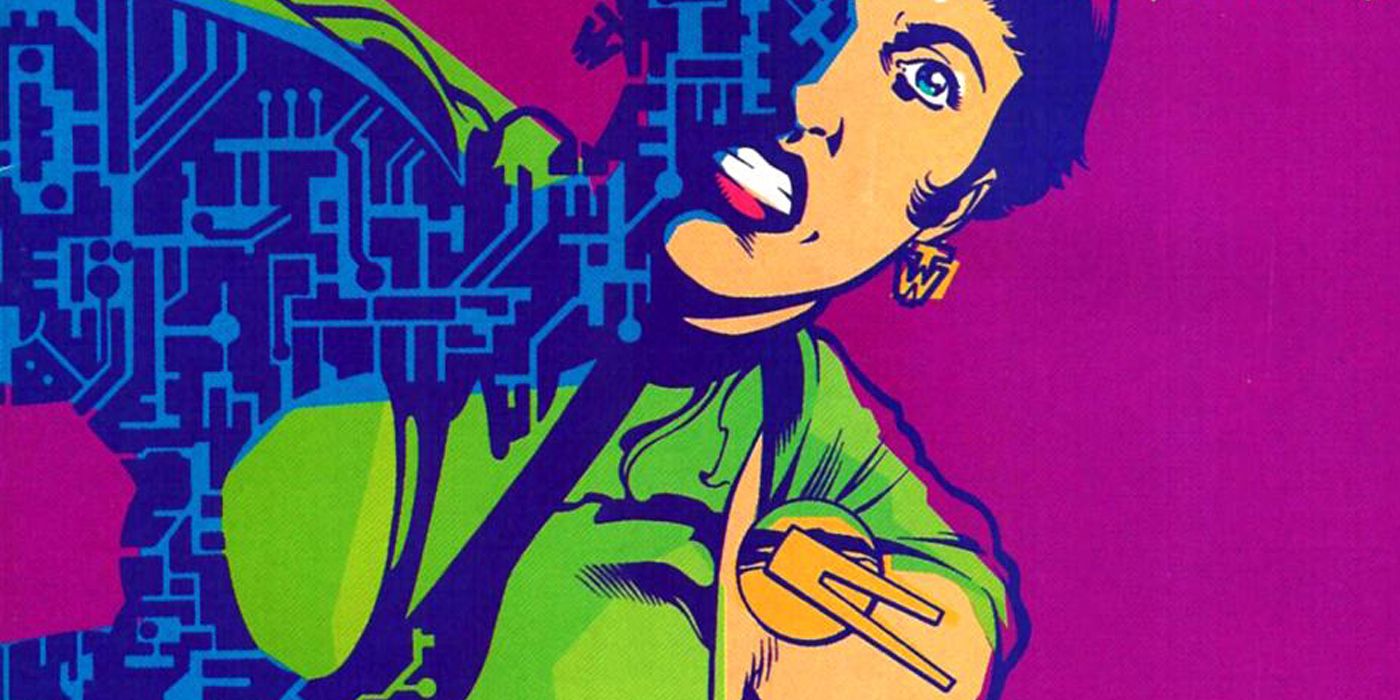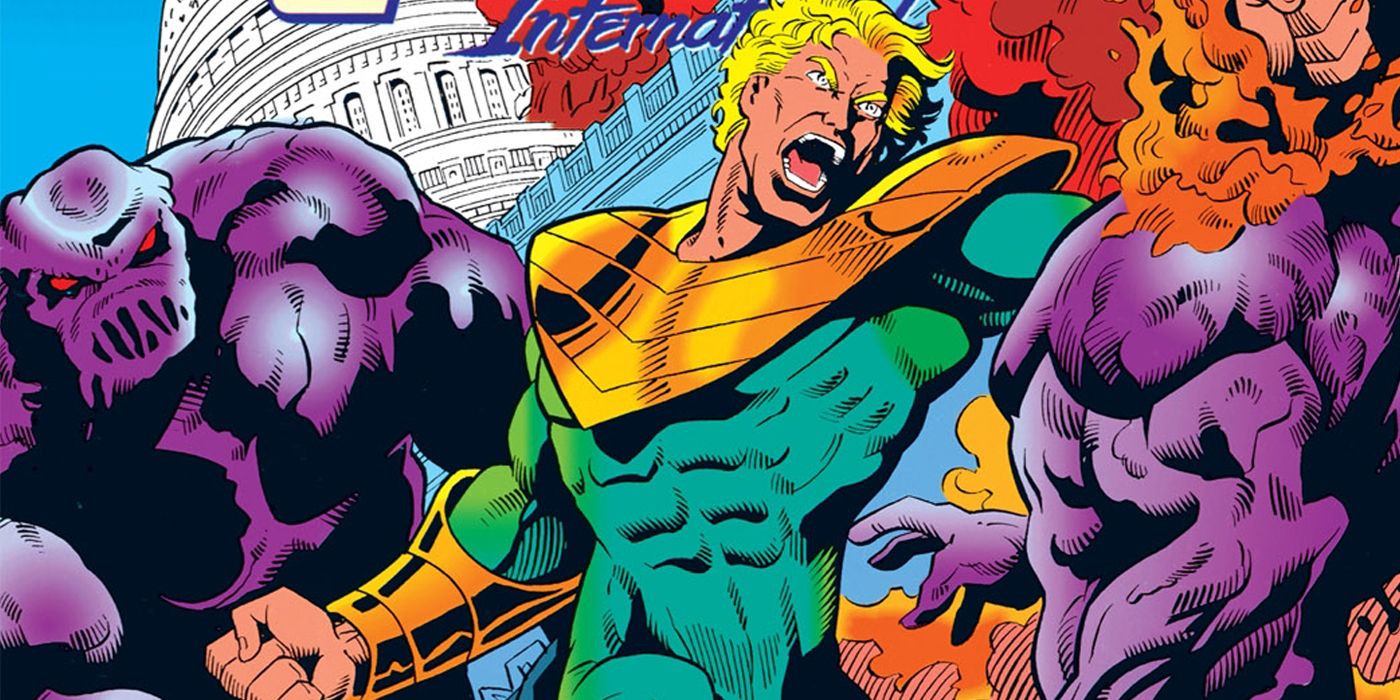In the upcoming “Justice League of America” relaunch, historically minor characters like Lobo and Killer Frost will finally get the chance to operate alongside some of DC Comics’ most iconic heroes. While there’s no way to tell whether they’ll be on the League for 10 years or 10 issues, this is a good opportunity to take a look at some of the other less prominent characters to serve on DC’s most famous super-team.
RELATED: DC's Justice League of America Enlists Batman, Black Canary and...Lobo
With a new “Justice League of America” on the horizon, CBR has put together a list of some of the Justice League’s forgotten members. Given the League's "unlimited" membership, this list is hardly comprehensive, but any character who served on any incarnation of the Justice League for any amount of time is fair game for our purposes.
15 Despero/L-Ron
One of the Justice League’s oddest members is one of the League’s oldest enemies. Despero made his debut in 1960’s “Justice League of America” #1, by Gardner Fox and Mike Sekowsky, as a hypnotic alien tyrant who played a few life-and-death chess matches with the Justice League. After bathing in the Flame of Py'tar, he became an incredible strong, imposing being consumed by hate for the League. After barely being defeated in two of the League’s most vicious battles, Despero’s mind was switched with the mind of the League’s ally L-Ron, a former robotic assistant to the intergalactic trader Magna Khan.
After a few years, Despero/L-Ron reappeared and had several adventures with the “Justice League Task Force,” a splinter group that originally selected different members for specific missions before coalescing into a steady roster that included Despero/L-Ron. During this time, L-Ron struggled to maintain control of the alien’s body, with his violent tendencies occasionally emerging. Eventually, Despero and L-Ron regained control of their respective bodies. Despero resumed his role as one of the League’s major foes while L-Ron fell into obscurity.
14 Justice League Antarctica
During the more humorous “Justice League International” era, intergalactic battles took a backseat to character-based, situational comedy. In one of this era’s most infamous stories, an ineffective incarnation of the villainous Injustice Gang evolved into the Justice League Antarctica in 1990’s “Justice League Annual” #4, by J.M. DeMatteis, Keith Giffen and Mike McKone. The villains Major Disaster, Big Sur, Clock King, Multi-Man, Cluemaster and the Mighty Bruce were chartered by League-leader Maxwell Lord to watch over an Antarctic headquarters.
Joined by the Green Lantern G’Nort and the Scarlet Skier, the Justice League Antarctica fought a group of genetically-enhanced mutant penguins. After their base was destroyed, the team became occasional allies of the League before returning to villainy. Years later, Major Disaster was drafted into a substitute Justice League of America by Batman and soon joined the regular team. After his chaos-inducing powers accidentally injured and killed some of his teammates, he retired from active duty and served as a reserve member until his death in “Infinite Crisis.”
13 Wonder Twins
The Wonder Twins, Zan and Jayna, are most famous for appearing on “Super Friends,” DC’s long-running Saturday morning cartoon. Along with their pet monkey Gleek, the two teenage alien siblings served as the Justice League’s trainees for the show’s middle years. When they touched, Zan could take any water-based form, while Jayne could become any animal. Over the years, the characters became cult favorites, garnering countless pop culture references, a series of shorts on Adult Swim’s website and an appearance on “Smallville” in 2009.
After appearing in the “Super Friends” comic book adaptation, the Wonder Twins made their transition to the official DC Universe in 1995. In “Extreme Justice” #9, by Ivan Velex Jr. and Al Rio introduced the pair as inadvertent foes to the Justice League splinter group. After serving with the short-lived team in supporting roles, the siblings later fought alongside most of DC’s teen heroes in a storyline during Peter David and Todd Nauck’s “Young Justice.” The Wonder Twins set a precedent for introducing cartoon-based characters into the DC Universe that Harley Quinn followed later on to great success.
12 Zauriel
In 1997, Grant Morrison and Howard Porter launched “JLA,” a new Justice League title that featured DC’s biggest characters after years of starring lesser-known members. As their run on the title went on, the creators introduced more and more members, including longtime DC heroes like Plastic Man and Steel. However, when the creators were forbidden from using Hawkman, due to the character’s hyper-complex continuity, they introduced Zauriel. He was a powerful ancient being who served the Presence as a kind of guardian angel before becoming that cosmic entity’s ambassador on Earth and serving with the League as their chief mystical expert.
After briefly dying in the climax of Morrison’s run on “JLA,” Zauriel left the League and became a guest star around the DC Universe. As Hawkman returned to the wider DC narrative, Zauriel joined some of the universe's other mystical heroes in the title “Shadowpact.” After the New 52 reboot, Zauriel briefly died again fighting alongside the magic-oriented Justice League Dark and served as a guardian to the mysterious Phantom Stranger. As of this writing, the once-prominent character has not appeared in two years.
11 Ambush Bug
While Deadpool and Harley Quinn might be the most famous self-aware characters in comics, they weren't the first. In 1982, Keith Giffen created Ambush Bug as a comedic Superman villain before he ostensibly became a hero. Ambush Bug started out as pop culture fanatic Irwin Schwab. After he found a green bodysuit from another world, Irwin became permanently bonded to the mysterious getup, which allowed him to teleport anywhere in the multiverse. Over the years, Ambush Bug became a cult favorite through a series of surreal specials and miniseries.
During 1999’s “Justice Leagues” crossover, Ambush Bug was a member of the Justice League of Anarchy, a Plastic Man-formed group of comedic characters like Harley Quinn and the Creeper. In 2006, he joined a short-lived incarnation of the Justice League led by Firestorm in DC’s weekly maxi-series “52.” This team, which featured D-listers like Firehawk and the Bulleteer, served in an unofficial capacity until several deaths occurred during one of their missions. After bouncing around the DC Universe, Ambush Bug became a self-aware promotional spokesman for DC Comics in the “Channel 52” feature that appeared in the back of many DC titles until fairly recently.
10 Blue Jay
In 1971, Blue Jay was introduced in “Justice League of America” # 71, by Mike Friedrich and Dick Dillin, as a member of an alien team of Avengers-analogues called the Champions of Angor. With the Ant Man-inspired ability to shrink down and fly, Blue Jay was plagued by doubts about his usefulness as a hero. After their homeworld was destroyed in a nuclear disaster, Blue Jay was one of the only members of his team to survive and traveled to Earth. After being captured during a failed effort to disarm Earth’s nuclear bombs, Blue Jay and the Scarlet Witch-inspired Silver Sorceress were captured by the Soviet Union.
After escaping, both heroes joined the Justice League Europe. Even though he temporarily led the team, Blue Jay was still plagued by self-doubt. After Silver Sorceress was killed in battle, he became a reserve member and did not appear for over a decade. After being kidnapped by aliens on two separate occasions, Blue Jay decided to go into the DC Multiverse to find a different planet where he might be more useful.
9 August General In Iron and Godiva
When DC Comics rebooted in 2011 with the New 52, one of the line’s launch titles was a new incarnation of “Justice League International.” While “Justice League” featured most of the company’s bigger heroes, this team was a United Nations-backed group that featured heroes from a number of countries around the world. Two of these characters were Godiva, a United Kingdom-based heroine with prehensile hair, and August-General-In-Iron, a Chinese hero with a genetically modified body.
Both characters existed previous to the New 52. Godiva was a member of the Global Guardians in the 1980s, and August General was a member of the Chinese super-team The Great Ten and the spy organization Checkmate. After just over a year, their incarnation of the League disbanded after being decimated by O.M.A.C., a robotic member who had been taken over by the artificial intelligence Brother Eye. After this, Godiva returned to her home in England. Despite the fact that O.M.A.C. appeared to have burned August General’s face off, he appeared alive and well during a cameo earlier this year in the Chinese-based title “New Super Man.”
8 Agent Liberty
After 1992’s “Death of Superman,” the Justice League America was in shambles. After several members were severely injured in the conflict that killed Superman, Wonder Woman led a new influx of members that included minor characters like Black Condor, the Ray and Agent Liberty. While Black Condor and the Ray were both updates of Golden Age characters, Agent Liberty was created by writer/penciller Dan Jurgens in 1991, during the midst of his “Superman” run.
Agent Liberty, Benjamin Lockwood in his civilian life, started out as an ex-CIA operative who had joined the anarchist group Sons of Liberty and fought Superman with a suit that could produce a Captain America-esuqe energy shield. After refusing to assassinate the politician Pete Ross, Clark Kent’s childhood friend, Agent Liberty left the organization and became an ally of Superman shortly before joining the League. Not long after an adventure in an alternate dimension, Agent Liberty retired. After becoming the President’s bodyguard, he was killed by an evil Superwoman in 2008’s “New Krypton” storyline.
7 Frankenstein
Both Marvel and DC Comics have told extensive stories involving famous public domain horror characters. While these stories usually feature the monsters in some kind of antagonistic role, DC reconfigured Frankenstein into a heroic, Hellboy-esque role. Debuting in Grant Morrison and Doug Mahnke’s 2006 series, “Seven Soldiers: Frankenstein,” this super-strong, unkillable Frankenstein was recruited into the Super Human Advanced Defense Executive, S.H.A.D.E., to fight threats too weird for the rest of the world to handle.
After DC’s New 52 reboot, Frankenstein starred in his own 2011 series “Frankenstein: Agent of S.H.A.D.E.,” where he had now worked for S.H.A.D.E. throughout the past century. Shortly before his solo series ended, he joined the supernatural team Justice League Dark, where he appeared in several major crossovers and even encountered He-Man and the Masters of the Universe. Since that team’s dissolution in 2015, a future version of the monster was featured as a Brother Eye-controlled antagonist in the “Future’s End” storyline and resumed working on behalf of S.H.A.D.E. in the present day.
6 The New Bloods
The crossover “Bloodlines” introduced new characters in all of 1993’s DC Comics annuals. Most of these characters gained powers after being injected with an alien parasite that activated their latent “meta-genes.” Collectively called the “New Bloods,” these characters went on to varying degrees of success over the rest of the 1990s, with "Hitman" being the effort’s only real success. As the New Bloods spread throughout the DC Universe, some of the more marginally successful characters ended up serving as a de facto Justice League Task Force, which had a revolving membership at the time.
In 1993’s “Justice League Task Force” #9, Martian Manhunter teamed up with Joe Public, Loose Cannon and Geist for a light-hearted adventure. Joe Public was a high-school gym teacher-turned-vigilante who could siphon off strength from those around him. Loose Cannon could grow into a Hulk-like monster who would change color depending on his level of anger, while Geist had the odd power to become invisible in bright light. Most of the New Bloods were quickly reduced to background cameos or killed off. However, the 2016 miniseries “Bloodlines” introduced rebooted versions of some of the New Bloods including Loose Cannon.
5 Amazing Man
For a character that hasn’t been featured prominently, Amazing Man has a surprisingly rich history within the DC Universe. The original Amazing Man was created by Roy Thomas and Jerry Ordway during their run on “All-Star Squadron,” which retroactively followed the World War II-era adventures of some of DC’s characters. After being caught in a lab explosion, former Olympian Will Everett gained the ability to absorb the properties of anything he touched. After being forced to retire, he became a civil rights advocate and raised a family.
In 1994, William Everett III inherited his grandfather’s powers and became the new Amazing Man. At Wonder Woman’s request, he joined the Justice League America briefly, before moving over to the more proactive splinter group seen in “Extreme Justice” for the duration of that title. Ultimately, he was killed by Starman villain the Mist alongside a new incarnation of Justice League Europe in 1998. However, his cousin, Markus Clay, became the third Amazing Man and briefly worked with the Justice Society of America.
4 Tim Hunter
When “Justice League Dark” launched in 2011 as part of DC’s New 52 reboot, several unlikely candidates became Justice League members on the magic-focused team. While Zatanna and Deadman had been associated with the League in the past, some of the team’s other members came from the odder corners of the DC Universe. One such character was Timothy Hunter, a glasses-wearing English boy who was destined to become as powerful as Merlin, as well as draw comparisons to Harry Potter for years to come.
In his introduction in Neil Gaiman and John Bolton’s 1990 series, “Books of Magic,” Tim took a magic-focused tour of the DC Universe. After this, Tim starred in a long-running series of the same name in DC’s Vertigo imprint, which held the rest of the DC Universe at arm’s length. Like Swamp Thing and John Constantine, Tim was reintegrated back into the main DC Universe after the reboot. He briefly joined the team during an extra-dimensional adventure with Zatanna, before disappearing from the rebooted universe altogether.
3 Mystek
The brief “Justice League Task Force” member Mystek has one of the stranger real-world histories of any Justice League member. Originally created by writer Christopher Priest and artist Manny Clark in “The Ray” #12, Mystek started out as a Korean-American teenager named Seong, who could manipulate energy on a sub-atomic level but had severe claustrophobia and paranoia. After having a misunderstanding with the Ray, Mystek was accidentally transported to the Justice League Task Force headquarters. In seeing her, Martian Manhunter offered her a position on the team. While the team was in space, she began panicking from her claustrophobia and blasted her way into open space, where she suffocated and died.
Despite her sudden and undignified death, there were larger plans for Mystek. As CBR covered in 2005, Mystek was originally a creator-owned character who was supposed to be sold to DC and star in her own mini-series. After Priest put her in the Justice League title to boost her profile, the deal collapsed and Priest made the decision to quickly kill her off. Although Priest recently returned to DC to write “Deathstroke,” Mystek has only appeared once since her death in 1995.
2 Tomorrow Woman
With her membership in the Justice League lasting only a single issue, Tomorrow Woman is one of the League’s shortest-serving members. Created by Grant Morrison and Howard Porter in 1997’s “JLA” #5, Tomorrow Woman was an android built by the mad scientists Professor Ivo and T.O. Morrow. Posing as a telekinetic and telepathic heroine, Tomorrow Woman was designed to join the League so that she could detonate a bomb that would fry the Justice League’s brains with an electro-magnetic pulse. After discovering the concept of freedom, she rejected her programming and died after setting off the bomb to stop a destructive machine.
Despite her brief existence, the character popped up a few times after her death. The android Hourman, who worked with the League shortly after her death, briefly revived her to inquire about the nature of their shared robotic existence. Later on, she was revived in an alternate reality in DC’s weekly series “Trinity,” where she was turned into the human reporter Clara Kendall.
1 Triumph
Triumph has the somewhat unique distinction of being the only character on this list to actually be forgotten within the continuity of the DC Universe. Originally created by Mark Waid, Brian Augustyn and Howard Porter, Triumph, who could control the electro-magnetic spectrum, debuted during DC’s time-twisting “Zero Hour” crossover in 1994. Triumph was said to have been a founding member and early leader of the Justice League who fell into the timestream and was erased from history. After he returned, he served with the Justice League Task Force before being expelled by Martian Manhunter for bad behavior.
After losing his soul in a deal with the villain Neron, Triumph was possessed by Lkz, an evil fifth dimensional imp, and attacked the JLA for not remembering him. He was only defeated by the combined might of the League and the newly-formed Justice Society revival, the JSA. After this encounter, he was frozen in a block of ice and memorialized as a founding member of the Justice League. Years later, he would be revived in the same alternate reality as Tomorrow Woman, and died saving his teammate.
Did we forget any of the Justice League's most forgettable members? Let us know in the comments!

